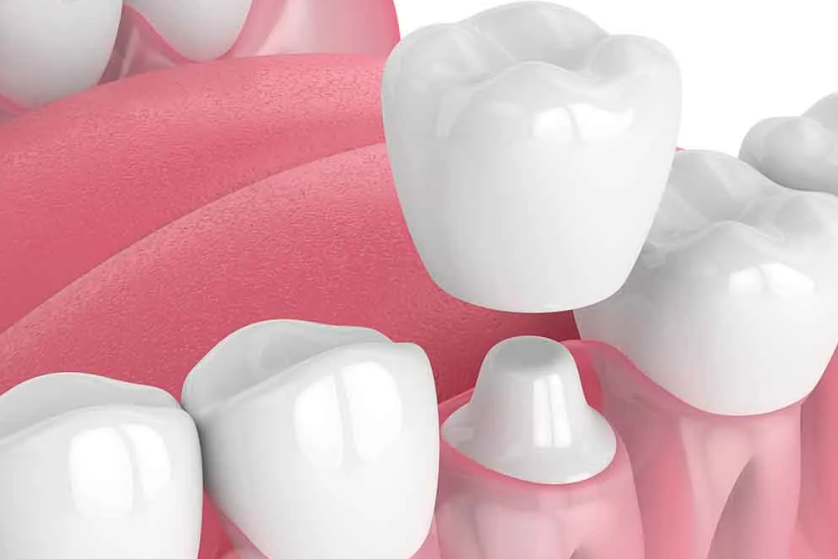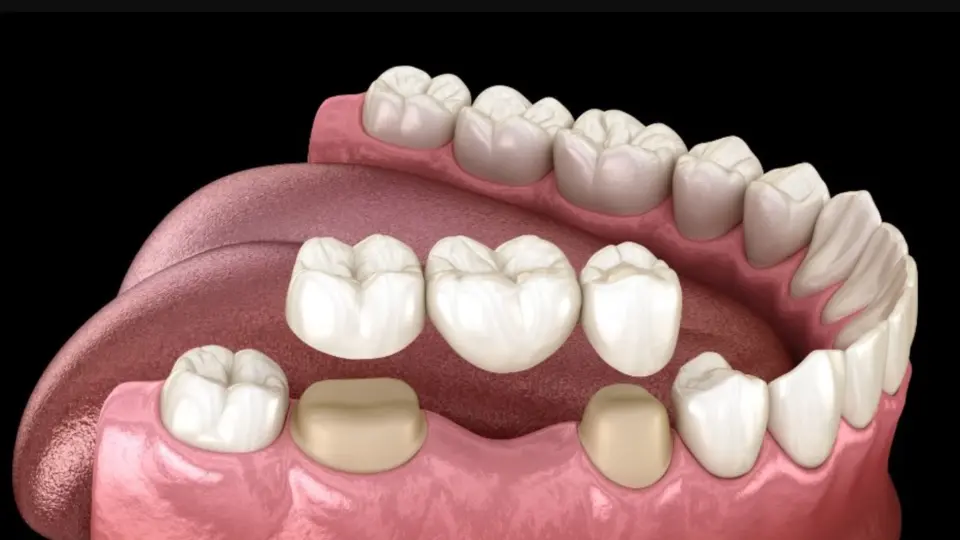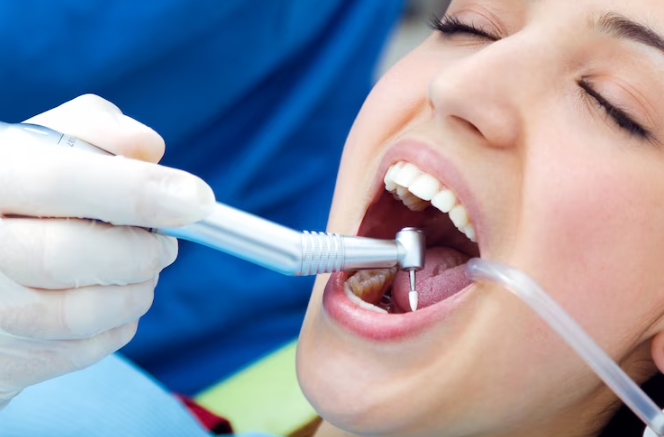Have you ever been to the dentist and heard the words “dental crown” thrown around? Or maybe your dentist has suggested getting a dental crown but you’re not sure if it’s the right decision for you. Don’t worry, you’re not alone. Many people have questions about dental crowns and how dentists determine if they are necessary for their patients.
Dentists play a crucial role in assessing whether a dental crown is necessary for their patients. They consider several factors, such as tooth decay, tooth damage, root canal treatment, or cosmetic improvements.
Modern dentistry offers various tools and techniques that aid dentists and patients in making informed decisions about dental crowns. These advancements, from advanced imaging technologies to customizable materials and improved anesthetics, provide a more comfortable and anxiety-free dental experience.
Dentists can now confidently determine if a dental crown is the right solution for their patients, considering various factors such as tooth condition, patient preferences, and functional requirements.
How does a dentist determine if you need a crown?
A dentist determines if you need a dental crown through a comprehensive oral health assessment. The following are the key steps and factors involved in this determination:
Clinical Examination:
- The dentist begins by visually inspecting the affected tooth or teeth. They look for signs of damage, decay, cracks, fractures, or other structural issues.
- The dentist also checks for signs of infection or inflammation, such as gum swelling or tenderness.
X-rays and Imaging:
- X-rays or other imaging techniques may be used to get a more detailed view of the tooth and its supporting structures, including the root.
- These images help the dentist assess the extent of damage, decay, or infection that may not be visible to the naked eye.
Symptoms and Patient History:
- The dentist will ask about any sensations like pain, sensitivity, or discomfort.
- They will inquire about your dental history, including any previous dental work or restorations on the tooth.
Functional Assessment:
- The dentist evaluates how the tooth functions during biting and chewing. They check for issues like sensitivity to temperature, pain while chewing, or changes in bite alignment.
Cavity Size and Tooth Structure:
- The size and location of a cavity or damage significantly affects the need for a crown.
- If the tooth’s structural integrity is compromised significantly, for strength and protection, a crown may be advised.
Cosmetic Considerations:
- Aesthetic factors may also be taken into account. If the tooth is in a visible area with cosmetic concerns, a crown can be used for functional and decorative restoration.
Alternative Treatments:
- The dentist will consider whether alternative treatments, such as dental fillings or inlays/onlays, are feasible and effective based on the specific case.
Patient Input:
- The patient’s preferences, concerns, and budget are important factors. The dentist discusses treatment options with the patient and considers their input in decision-making.
For dental crowns, the dentist will decide the most suitable and necessary treatment based on the combination of these factors. Dental professionals will discuss crowns if necessary procedure, materials, and associated costs with the patient before proceeding. The ultimate goal is to restore the tooth’s health, function, and aesthetics while addressing the patient’s needs and concerns.
How do you tell if a tooth crown is not fitted properly?
Detecting an improperly fitted tooth crown requires attention to certain signs and symptoms:
 Pain or Discomfort: Persistent pain or discomfort around the crowned tooth, especially during biting or chewing, can indicate an ill-fitting crown.
Pain or Discomfort: Persistent pain or discomfort around the crowned tooth, especially during biting or chewing, can indicate an ill-fitting crown.- Sensitivity: Hypersensitivity to heat or cold or when biting down on certain foods suggests a problem with the crown’s fit.
- Gum Irritation: If the gums around the crowned tooth become swollen, red, or painful, it may be due to an improper fit causing irritation.
- Visible Gap: An observable gap between the crown and the adjacent teeth or along the gum line can indicate a poor fit.
- Uneven Bite: An uneven or altered bite alignment, where the crowned tooth feels higher or lower than neighboring teeth, may signify an issue.
- Difficulty in Cleaning: Difficulty in cleaning or flossing around the crowned tooth, leading to recurrent plaque buildup and gum problems, can be a sign.
- Visible Damage: Visual inspection may reveal chipping, cracking, or wear on the crown’s surface, suggesting an improper fit.
If you experience any of these signs, it’s essential to consult your dentist promptly. An improperly fitted crown can lead to further dental issues, so addressing the problem early is crucial for maintaining oral health.
Who is a good candidate for dental crowns?
Good candidates for dental crowns are individuals with specific dental conditions that can benefit from crowns’ restoration and protection. Some common situations in which dental crowns are recommended include:
- Extensive Tooth Decay: Teeth with significant decay that cannot be effectively restored with dental fillings may require crowns to cover and protect the remaining healthy tooth structure.
- Fractured or Cracked Teeth: Teeth with fractures or cracks, especially those that extend into the tooth’s root, can be reinforced and preserved with crowns.
- Weakened or Worn Teeth: Teeth that have been weakened due to large fillings, excessive wear, or enamel erosion can be strengthened and protected by crowns.
- Root Canal Therapy: Immediately following a root canal procedure, a crown is often placed to seal and protect the treated tooth, preventing further infection and restoring its function.
- Cosmetic Enhancement: Crowns can be used for decorative purposes to improve the appearance of teeth with severe discoloration, irregular shape, or size discrepancies.
- Support for Dental Bridges: Crowns anchor dental bridges, which replace missing teeth by attaching to adjacent natural teeth.
- Dental Implants: To top off, a crown is dental implants to replace individual missing teeth, providing a natural-looking and functional solution.
- Protection of Vulnerable Teeth: Teeth at risk of damage, such as those with a history of grinding or clenching, can be safeguarded with crowns.
- Children with Severe Tooth Decay: In pediatric dentistry, crowns may treat extensively decayed baby teeth, preserving them until they naturally fall out.
- Cosmetic Smile Makeovers: Crowns can be part of comprehensive smile makeover plans to enhance the overall aesthetics of a person’s smile.
Find out if you qualify for dental implants by taking this quiz crowns, it’s essential to have an examination performed by a dentist of specific oral problems and suggest the best course of action for fixing them. When making their recommendations, the dentist will consider the extent of damage, oral health, and aesthetic preferences.
Experience Modern Dentistry Like Never Before!
Your dental health is our primary concern at Jaline Boccuzzi, DMD, PA // JBDentistry. You can trust Dr. Jaline Boccuzzi and her caring staff to give in a warm and welcoming environment where you may get the best dental care available.
Whether you’re here for a checkup, cosmetic work, or help calming your nerves, you’ll find all you need here. Your happiness and contentment are direct indicators of our competence.
Make an appointment with us today by calling or writing and receive the best dental care you’ve ever had.


